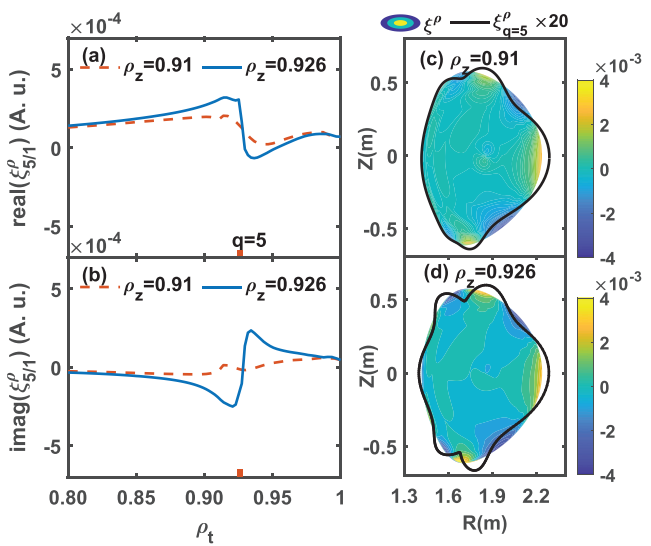
The Institute of Plasma Physics (ASIPP) researchers made a breakthrough in the subject of integrated Edge Localized Mode (ELM) and the divertor power flux control.
"This time we take the lead in demonstrating the integrated ELM and divertor power flux control in target plasmas with parameters close to International Thermonuclear Experimental Reactor (ITER) high fusion gain (Q) operation using the Resonant Magnetic Perturbations (RMP)," said Prof. SUN Youwen from ASIPP, who led the team.
Prof. SUN from ASIPP, Hefei Institutes of Physical Science (HFIPS), Chinese Academy of Sciences (CAS) has been working on ELM control project since 2014. The recent findings have been published in Nuclear Fusion and Physics of Plasmas.
In tokamaks one critical challenge is to protect the device materials from facing the extremely hot plasmas.
Both the stationary power flux and the transient power flux from ELMs need to be reduced or eliminated, which is one of the key issues for future fusion devices like ITER.
The RMP capability of ELM suppression has been confirmed but its application in ITER high Q operation and the impact on divertor power fluxes as well as the access to high recycling and radiative divertor conditions still lack verification from experiments and modelling.
EAST is a fully superconducting tokamak with a tungsten upper divertor and has unique capabilities to access ELM suppression in H-modes with low input torque and low q95 like ITER. It has an in-vessel RMP system, which can generate RMP fields with n up to 4. This team demonstrated the n=4 RMP ELM suppression in target plasmas of equivalent torque to that in ITER high Q operation for the first time. They discovered the density range and q95 windows to achieve ELM suppression. With the numerical modelling by the Magneto-hydrodynamic code MARS-F, they revealed that these windows were determined by peaks of edge stochasticity in the 3D topology.
In another experiment, the team, collaborated with ITER, investigated the integrated divertor power flux control under ITER like parameters.
They proved that the RMP ELM suppression can be maintained in high recycling plasmas by gas puffing or pellet injection as well as in radiative divertor conditions by impurity seeding. The stationary power fluxes are also effectively reduced. By using 3D magnetic topology modelling combined with plasma response modelling, they revealed that the shallow penetration into the confined plasma region of field lines connected to off-separatrix lobes for n = 4 RMP application would benefit the power reduction on these lobes.
To better understand the ELM suppression mechanism, scientists investigated the rotation screening effect to the applied RMP field.
They concluded that the plasma response was tearing-like when the zero-crossing of ExB rotation or electron perpendicular rotation was within the singular layer, while it was kink-like when the zero-crossing was far from the layer. The plasma response was enhanced when the rotation near the pedestal top was within ±10 krad/s. Plasma rotation near pedestal top should not be far away from zero but may not be necessary to have zero-crossing for field penetration and hence accessing ELM suppression.
These results enhance the understanding of the ELM control mechanism and make contribution to the future application of high n RMP for ELM suppression in ITER high Q discharges.
These works are supported by the National Key R&D Program of China and the National Natural Science Foundation of China.
Link to Paper: First demonstration of full ELM suppression in low input torque plasmas to support ITER research plan using n = 4 RMP in EAST
Plasma response to resonant magnetic perturbations near rotation zero-crossing in low torque plasmas

The parameters of n=4 RMP ELM suppression in EAS (Image by JIA Manni)

The influence of zero-crossing location of ExB rotation on plasma radial displacement (Image by JIA Manni)

The divertor power load reduction in high recycling ELM suppression plasmas and the comparison with the modelled field line penetration depth (Image by JIA Manni)
Plasma response to resonant magnetic perturbations near rotation zero-crossing in low torque plasmas